Pet X-Rays
in London
When your beloved pet is unwell or injured, understanding what’s happening internally is crucial for effective treatment.
At The Vet on Richmond Hill in London, we offer state-of-the-art digital X-ray services to provide rapid and accurate diagnoses, helping us to quickly determine the best course of action for your pet.
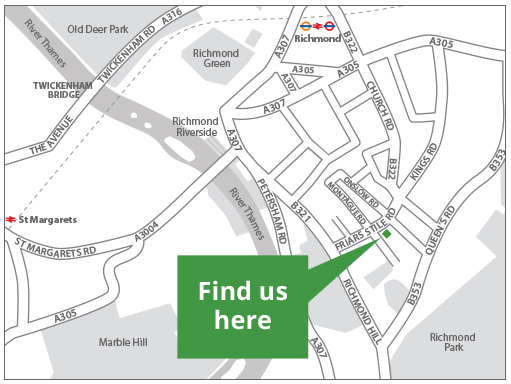
What are pet X-rays?
Pet X-rays, also known as radiographs, are a non-invasive diagnostic imaging technique that uses low levels of radiation to produce detailed images of your pet’s internal structures.
They allow us to visualise bones, organs, and soft tissues, helping to identify a wide range of medical conditions that aren’t visible from the outside.
Our pet x-ray services
We utilise modern digital radiography technology, which offers several advantages, including faster image acquisition, higher image quality, and the ability to easily share images with specialists if a referral is needed.
Our experienced veterinary team ensures pets are positioned safely and comfortably, with sedation or general anaesthesia often used to achieve clear and accurate images.
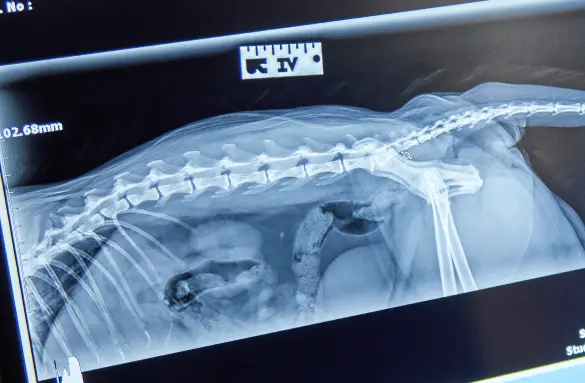
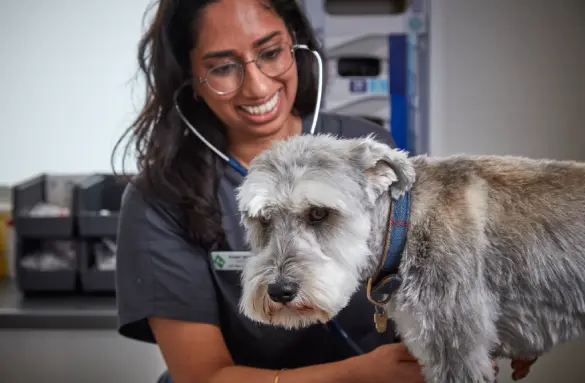
Dog x-rays
From investigating lameness and suspected fractures to assessing the chest for respiratory or heart conditions, or the abdomen for foreign bodies or organ abnormalities, X-rays are an invaluable tool in canine diagnostics.
They can help us pinpoint the source of your dog’s discomfort or illness quickly.
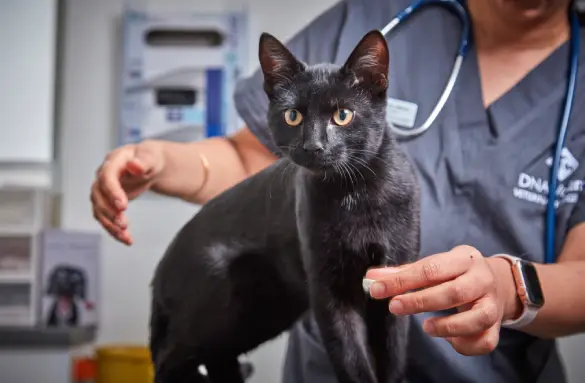
Cat x-rays
Cats can be masters at hiding pain or illness, making diagnostic imaging even more important. X-rays are frequently used for feline patients to examine the chest for conditions like asthma or heart disease, assess for bladder stones, or investigate digestive issues.
Our team is skilled in carrying out feline X-rays safely, using sedation if needed to minimise stress and ensure precise imaging.
How does a pet X-ray work?
When your pet undergoes an X-ray, a controlled beam of radiation is passed through their body. Different tissues and structures absorb varying amounts of this radiation.
Dense materials like bone absorb more radiation and appear white on the image, while less dense tissues like air (in the lungs) appear black.
Soft tissues, such as organs, appear in shades of grey. These variations create a detailed picture that our veterinarians can interpret to diagnose conditions.
The procedure is quick, typically taking only a few minutes.
When is a pet x-ray needed?
X-rays are a versatile diagnostic tool and may be recommended for a variety of reasons, including:
- Suspected Fractures or Bone Injuries: To confirm and assess the extent of broken bones or joint dislocations.
- Lameness or Limping: To identify underlying orthopaedic issues like arthritis, sprains, or bone tumours.
- Foreign Body Ingestion: To locate swallowed objects in the digestive tract.
- Persistent Vomiting or Diarrhoea: To check for blockages, gas, or abnormalities in the abdomen.
- Breathing Difficulties or Coughing: To examine the lungs and heart for conditions like pneumonia, heart enlargement, or fluid build-up.
- Abdominal Pain or Swelling: To investigate organ size, shape, and presence of masses.
- Dental Issues: To assess tooth roots, jaw bone health, and abscesses.
- Pre-Surgical Assessment: To gain a clear picture of internal structures before an operation.
- Monitoring Conditions: To track the progression of certain diseases or the healing of injuries.
How to prepare your pet for an X-ray?
Generally, there isn’t extensive preparation needed for a routine X-ray. However, your veterinarian might advise the following:
- Withhold food for a few hours before the appointment, especially if sedation or anaesthesia is anticipated. This reduces the risk of vomiting.
- If your pet is on any medication, discuss this with our team beforehand.
In many cases, light sedation or anaesthesia is recommended to ensure your pet remains completely still for clear, safe imaging, particularly if they are in pain, anxious, or the area being X-rayed is sensitive.
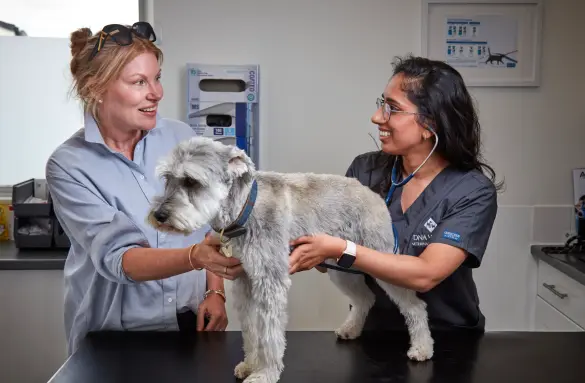
When do you get the results?
Our team is dedicated to making sure you fully understand the results of your pet’s X-ray.
We use digital X-ray technology, so images are available almost instantly. This means our vets can review the images with you directly during your appointment or very soon after the X-ray is taken.
We will clearly explain our findings, discuss any diagnoses, and outline the recommended next steps for your pet’s care.
If a specialist opinion is required, digital images can be shared quickly for a prompt referral.
Book an appointment today.
Discuss your pet’s needs, and we’ll advise on next steps.



